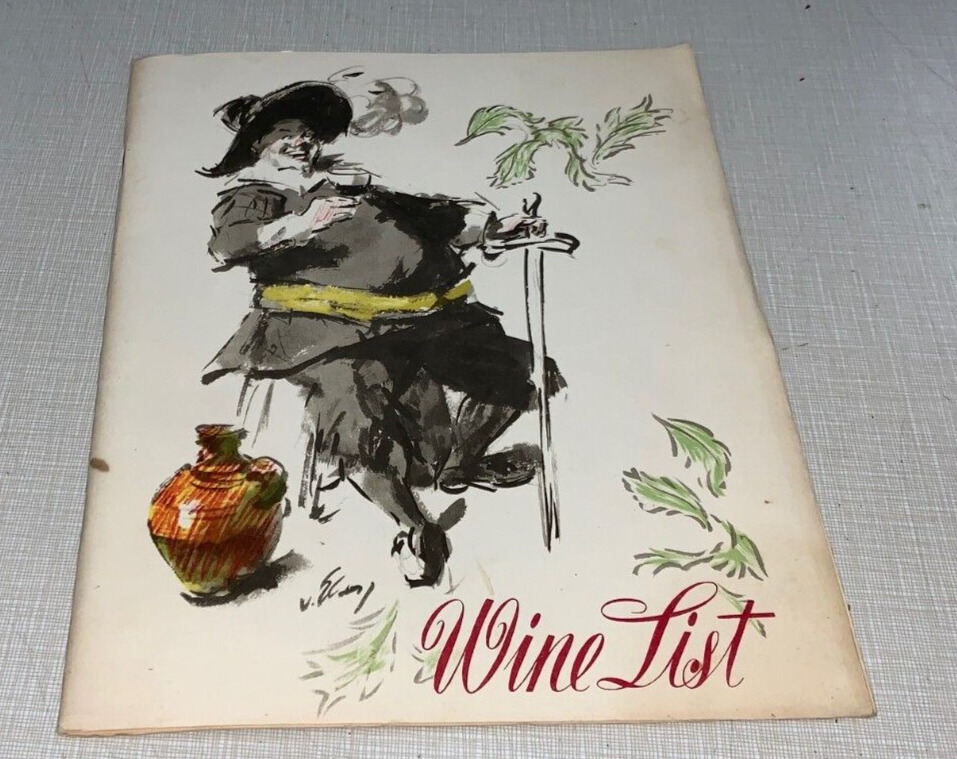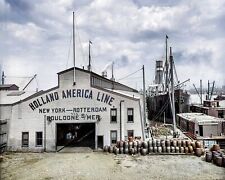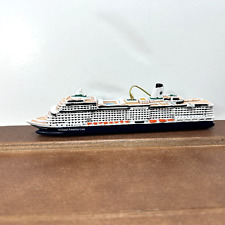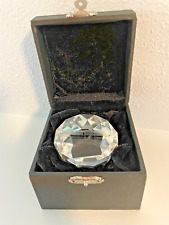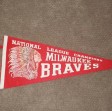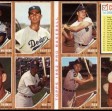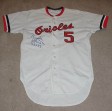When you click on links to various merchants on this site and make a purchase, this can result in this site earning a commission. Affiliate programs and affiliations include, but are not limited to, the eBay Partner Network.
Lot of 39 Menus from 1955 U.S.S. Ryndam cruise line. Plus a Wine List no date.Holland America Line (HAL) is a US-owned cruise line, a subsidiary of Carnival Corporation & plc headquartered in Seattle, Washington, United States.
Holland America Line was founded in Rotterdam, Netherlands, and from 1873 to 1989, it operated as a Dutch shipping line, a passenger line, a cargo line and a cruise line operating primarily between the Netherlands and North America. As part of the company's legacy, it was directly involved in the transport of many hundreds of thousands of emigrants from the Netherlands to North America.[2]
Holland America has been a subsidiary of Carnival Corporation since 1989.[3]
HistoryEarly decades
1898 Holland-Amerika Lijn posterHolland America Line was founded in 1873, as the Nederlandsch-Amerikaansche Stoomvaart Maatschappij (Dutch-American Steamship Company), in short Holland-Amerika Lijn, a shipping and passenger line.[4] It was headquartered in Rotterdam, in the building which is now the Hotel New York.[5] The company was formed as a result of the reorganization of an earlier company, Plate, Reuchlin & Co. The company's first ship was the original Rotterdam (1872), which sailed its 15-day maiden voyage from the Netherlands to New York City on October 15, 1872. Cargo service to New York started in 1909.
HAL's main route was between Rotterdam and New York. Its "New York" terminal was in fact in Hoboken, New Jersey, on the opposite side of the Hudson River from New York City. By 1892, HAL ships sailing between Rotterdam and Hoboken were scheduled to call en route at Boulogne in France.[6]
In its first 25 years, the company carried 400,000 people from Europe to the Americas. Other North American ports were added during the early 20th century.[2]
Larger ships
A painting of the third Rotterdam, launched by Harland & Wolff in 1897Harland & Wolff in Belfast launched the third Rotterdam (1897).[7] She was the first HAL ship built by H&W. H&W next launched Statendam (1898):[8] the first HAL ship of that name, and the first HAL ship of more than 10,000 GRT. In 1899 Blohm+Voss in Hamburg launched Potsdam, which was 550 feet (170 m) long and 12,606 GRT.[9] H&W built two sister ships for Potsdam: Rijndam (1901)[10] and Noordam (1902).[11]
In 1902 William Pirrie, Chairman of H&W, negotiated to buy 51 percent of HAL's share capital. Pirrie was acting on behalf of J. P. Morgan's International Mercantile Marine Company (IMM), which already owned HAL's Belgian competitor Red Star Line. Pirrie did not disclose the fact that IMM had formed a cartel with Albert Ballin's Hamburg America Line (HAPAG) and Norddeutscher Lloyd (NDL), and wanted to buy HAL to control passenger and cargo rates across the North Atlantic.[12]
HAL continued to order ever larger ships from H&W. Nieuw Amsterdam (1905) was 600 feet (180 m) long and 16,967 GRT.[13] The fourth Rotterdam (1908) was 650 feet (200 m) long and 24,149 GRT.[14]
In 1895 HAL offered its first cruise. Its second cruise, from New York to Palestine, was offered in 1910.
First World WarIn July 1914 H&W launched a new Statendam that was 740 feet (230 m) and 32,120 GRT. However, a month later, the First World War started, and in 1915 the UK government requisitioned the new ship in H&W's shipyard and had her completed as the troopship Justicia. A U-boat sank her in 1918, and HAL accepted the UK government's offer of 60,000 tons of steel as compensation.[15]Former head office in Rotterdam, completed in 1917, now the Hotel New YorkIn the First World War the Netherlands were neutral, but numerous Dutch merchant ships were sunk. HAL lost five cargo ships, totalling more than 30,000 GRT. In 1915 two German mines sank Eemdijk,[16] and in 1916 U-53 stopped and sank Blommersdijk.[17] On 22 February 1917 U-21 sank an entire Dutch convoy, including the HAL ships Noorderdijk and Zaandijk.[18][19]
After the First World War began, Dutch capitalists bought HAPAG and NDL's shares in HAL. In December 1917, the same Dutch interests paid $3.5 million for half of IMM's shares in HAL. This amounted to about $800 per share, which was far more than IMM had paid for them in 1902. In 1916, IMM had received a dividend of 50 percent on its HAL shareholding.[20]
In March 1918 President Woodrow Wilson issued a proclamation seizing under angary 89 Dutch merchant ships in US ports. They included the HAL liner Rijndam, which was converted into a US troopship,[21] and eight HAL cargo ships. One of these, Oosterdijk, was sunk in a collision while being used by the United States Navy.[22] The United States Shipping Board returned Rijndam and the surviving cargo ships to HAL in the course of 1919.
Between the World Wars
Volendam, completed in 1922In 1921–22 HAL introduced its first steam turbine passenger liners: the 8,800 GRT Maasdam, Edam, Leerdam and Spaardnam. They served a route between Rotterdam and Tampico in Mexico. On westbound voyages, their ports of call were Antwerp, Boulogne, Bilbao, Santander, Gijón, A Coruña, Vigo, Havana and Vera Cruz. On eastbound voyages, they called at Vera Cruz, New Orleans, Havana, A Coruña and Santander.[6][23]
In 1922 H&W launched two larger passenger liners for HAL's Rotterdam – Hoboken route: the 15,000 GRT Volendam and Veendam.[24][25] By 1925 the Rotterdam – Hoboken route included calls at Southampton and Halifax, Nova Scotia on westbound crossings only, and Plymouth, Devon on eastbound crossings only, as well as serving Boulogne in both directions.[6]The third Statendam was laid down in 1921 but not completed until 1929The third Statendam, built to replace Justicia, was also a turbine steamship, but building her took eight years. H&W laid her down in 1921 and launched her in 1924, but then stopped work because HAL lacked the funds to pay for her to be completed. In 1927 the Dutch government gave HAL a loan to get the ship towed to the Netherlands and completed at Wilton's Dok- en Werf Maatschappij in Schiedam. She was completed in 1929, on the eve of the Great Depression, but proved economical to run. She was HAL's flagship on the transatlantic run for most of the 1930s. Statendam also gave annual winter cruises from New York, usually to the Caribbean.[26]
In 1920 van der Giessen & Zonen in Krimpen aan den IJssel launched Burgerdijk,[27] which was HAL's first steam turbine cargo ship. She was the first of eight 6,850 GRT sister ships, all with a name beginning with "B", built between 1920 and 1922. In 1922 and 1923 Scheepsbouw-Maatschappij 'Nieuwe Waterweg' in Scheidam launched a pair of larger turbine cargo ships for HAL, the 8,350 GRT Gaasterdijk and Grootendijk.[28][29] However, HAL sold both ships in 1931.[28][29]
In 1921 and 1922 H&W launched the 9,350 GRT Dinteldijk and Drechtdijk, which were HAL's first motor ships. They were refrigerated cargo ships, and they also had berths for 18 or 19 first class passengers.[30][31] In 1929 and 1930 Wilton's in Schiedam launched two more motor ships for refrigerated cargo, the 10,200 GRT Delftdijk and Damsterdijk. These were cargo liners, with berths for 50 first class passengers.[32][33]The 11,000 GRT motor ship Zaandam, launched in 1938By 1930 HAL was operating routes between Rotterdam and the British Columbia Coast via London, Panama Canal and West Coast of the United States.[34] By 1937 HAL worked these routes jointly with Royal Mail Lines. This was mainly a refrigerated cargo service, but the ships carried some passengers. Damsterdijk, Delftdijk, Dinteldijk and Drechtdijk shared the route with RML's refrigerated cargo ships Lochmonar, Lochkatrine and Lochgoil. As well as London, they were scheduled to call at various other ports in Britain, the Caribbean, California, Oregon, Washington and British Columbia, terminating at Vancouver. On westbound voyages Damsterdijk, Delftdijk and Lochmonar also served Guayaquil in Ecuador, whereas Dinteldijk, Drechtdijk, Lochkatrine and Lochgoil served Bermuda.[6]
A new HAL flagship, the 36,287 GRT Nieuw Amsterdam, was launched in 1937 and entered service in 1938.[35] In 1939 HAL bought the former Red Star liners Westernland and Pennland, a pair of 16,000 GRT sister ships that Nazi Germany had forced the Jewish shipping magnate Arnold Bernstein to forfeit.[36][37]
Second World War
Ships in Rotterdam including Statendam (far left) and Veendam (right), burning on 11 May 1940In the Second World War, HAL lost five passenger ships and eight cargo ships: a total of more than 140,000 GRT. Three were while the Netherlands were still neutral. Mines sank Binnendijk and Spaarndam in October and November 1939,[38][39] and U-48 sank Burgerdijk in February 1940.[40]
On 10 May Germany invaded the Netherlands. A number of HAL ships were burnt out in the battle for Rotterdam, including the liner Statendam and cargo ships Boschdijk and Dinteldijk. Statendam was scrapped three months later.[26] German forces towed Boschdijk to the Baltic, where the Luftwaffe used her for target practice until she sank in April 1942.[41] German forces scuttled Dinteldijk as a blockship in 1944.[30]
By 27 May, Germany had occupied the whole of the Netherlands. By 7 June, the Dutch government-in-exile and the UK government had formed a British-Netherlands shipping committee in London, and NASM announced that it would charter to the UK government all of its transatlantic ships except Nieuw Amsterdam.[42] Pennland became a troop ship.[37] The Dutch government-in-exile requisitioned Westernland, berthed at Falmouth, Cornwall. She became an accommodation ship for the Royal Netherlands Navy, and was later sold to the UK Admiralty.[36] By October 1940 Nieuw Amsterdam had also become an Allied troop ship. She sailed half a million miles and carried 400,000 military personnel.HAL's Second World War memorial in Katendrecht, RotterdamNearly 200 people were killed in wartime sinkings of HAL ships. The biggest loss of life was in November 1942, when U-174 sank the cargo-passenger ship Zaandam. 135 of her passengers and crew were killed.[43] 39 people were killed in January 1941, when a mine sank the cargo ship Beemsterdijk.[44]
In October 1940 U-38 sank Bilderdijk.[45] In 1941 U-564 sank the cargo-passenger liner Maasdam, and an air attack in German invasion of Greece sank the troopship Pennland.[37][46] In September 1942, U-34 sank Breedijk.[47] In 1940 German forces requisitioned Drechtdijk. In 1945 she hit a mine in the Baltic, and a week later was badly damaged in an air raid.[31]
Post-war era
The second Nieuw Amsterdam entered service in 1938, became a troop ship, and survived the Second World WarAfter the war, HAL took part in transporting a great wave of immigrants from the Netherlands to Canada and elsewhere.[48] Its Rotterdam – Hoboken route continued to serve Southampton, but by 1948 the port of Boulogne was still not in a condition to resume handling large ocean liners. Instead, from February 1948 Nieuw Amsterdam started calling at Le Havre as well as Southampton. At first she was the only HAL ship to do so. Veendam made intermediate calls at Southampton only, and Noordam and Westerdam ran direct between Rotterdam and Hoboken.[49] By 1959 HAL ships were calling also at Cobh, and running a service to Quebec and Montreal. By 1963 they also served Bremerhaven.[6]
A notable ship in the post-war era was the fifth Rotterdam, launched in 1959. She was one of the first North Atlantic ships equipped for two-class transatlantic crossing and one-class luxury cruising.
By the late 1960s, the golden era of transatlantic passenger ships had been ended by the introduction of transatlantic jet air travel. HAL ended transatlantic service in the early 1970s.
In 1973, it sold its cargo shipping division, which continued to operate freight liner services with cargo ships, a Lighter aboard ship ('LASH' ship, MV Bilderdyk) and then container ships under the trade name Incotrans, with headquarters in Rotterdam, with some of its North American services operated in partnership with the French shipping line Compagnie Générale Maritime.
HAL ceased operating as a Dutch line in 1989, when Carnival bought it for 1.2 billion guilders (€530 million). The proceeds were put into an investment company (HAL Investments), the majority of which is owned by the van der Vorm family.
Former fleet (before 1989) This list is incomplete; you can help by adding missing items. (June 2023)HAL ships sold, scrapped or lost before Carnival took over.[48]
SS Aagtedijk, 1950–63 — Launched in 1945 as Turand. Spelling changed to Aagtedyk in 1953. Scrapped after a collision.[50]Beemsterdijk, 1922 — Sunk by a mine in 1941.[44]SS Beukelsdijk, 1916 — Wrecked on rocks in 1923.[51]SS Bilderdijk (I), 1922 — Sunk by torpedo by U-38 in 1940.[45]SS Binnendijk, 1921 — Sunk by a mine in 1939.[38]SS Blommersdijk (I), 1916 — Launched in 1907 as Blötberg. Sunk by shellfire by U-53 in 1916.[17]SS Boschdijk, 1922 — Burnt ont in 1940, sunk in 1942 as Luftwaffe target practice.[41]SS Breedijk, 1922 — Sunk by torpedo by U-34 in 1942.[47]SS Burgerdijk, 1921 — Sunk by torpedo by U-48 in 1940.[40]MV Damsterdijk, 1930 — Scrapped in 1966.[33]MV Delftdijk, 1929 — Scrapped in 1963.[32]MV Dinteldijk (I), 1922 — Burnt out in 1940, sunk as a blockship in 1944, scrapped in 1947.[30]MV Drechtdijk, 1923 — Captured by German forces in 1940, renamed Russelheim, sunk by an air attack in 1945.[31]SS Edam (I), 1881 — Sunk in a collision in 1882[52]SS Edam (II), 1883 — Sunk in a collision in 1895[53]SS Eemdijk (I), 1915 — Launched in 1913 as Oceanos. Sunk by a mine in 1915.[16]SS Gaasterdijk, 1922 — Sold in 1931, sunk in 1942.[28] Sister of Grootendijk.SS Gorredijk (I), 1909–23 — Launched in 1902 as Como. Sold and renamed Benmacdhui. Scrapped in 1931.[54]SS Groote Beer, 1951–63 — Launched in 1944, scrapped in 1971.[55]SS Grootendijk, 1923 — Sold in 1931, sunk in 1941.[29] Sister of Gaasterdijk.SS Leerdam (I), 1882 — Launched in 1881 as Nederland. Sunk in a collision in 1889.[56]SS Maartensdijk, 1909–23 — Built in 1902 as Rapallo. Sold and renamed Benvrackie. Scrapped in 1933.[57]SS Maasdam (III), 1921 — Sunk by torpedo by U-564 in 1941.[46]SS Maasdam (IV), 1952–68 — became Polish Ocean Lines' TSS Stefan Batory. Scrapped in 2000.[58]SS Nieuw Amsterdam (I), 1905–32 — Largest HAL ship until Rotterdam (IV) was completed in 1908.[59]SS Nieuw Amsterdam (II), 1937–74 — UK troopship in Second World War[35]SS Noordam (I), 1902 — Scrapped in 1927. Warned RMS Titanic of sea ice on the latter's maiden voyage.[60]MV Noordam (II), 1938 — Sold in 1963, scrapped in 1967.[61] Sister of Zaandam (II)SS Noorderdijk (I), 1913 — Sunk by torpedo by U-21 in 1917.[18]SS Oosterdijk, 1913–18 — Sister of Westerdijk. Sunk in a collision.[22]SS P. Caland, 1874–97. Sister of W. A. Scholten. Sold and renamed Ressel.[62]SS Pennland, 1939 — launched in 1920 as Pittsburgh. Troopship from 1940. Sunk by air raid in 1941.[37] Sister of Westernland.SS Potsdam, 1900–15 — Largest HAL ship when she entered service. Sold and renamed Stockholm. Scuttled in 1944, scrapped in 1947.MS Prinsendam, 1973–80 — Sank as a result of fire in her engine room.SS Rijndam (I), 1901 — US troopship 1918–19. Scrapped 1929.SS Rotterdam (I), 1873 — Wrecked in 1883.SS Rotterdam (II), 1886 — Scrapped in 1895.SS Rotterdam (III), 1897–1906 — Sold and renamed C. F. Tietgen. Sunk by torpedo by U-151 in 1918.[63]SS Rotterdam (IV), 1908 — Scrapped in 1940. Largest HAL ship until Statendam (III) entered service in 1929.SS Ryndam (II), 1951–73 — Sank in 2003 on her way to be scrapped.[58]MV Sloterdijk (II) 1940 — Sister of Sommelsdijk (III). US troopship in the Second World War. Dutch troopship in the Indonesian National Revolution. Scrapped in 1966.[64][65]SS Soestdijk (I), 1901–23 — Sold and renamed Callandia. Scrapped in 1931.[66]MV Sommelsdijk (III) 1939 — Wartime service as US troopship. Scrapped in 1965.[64][67]SS Spaarndam (II), 1922 — Combined passenger and cargo ship. Sunk by a mine in 1939 with the loss of six lives.[39]SS Statendam (I), 1898–1911 — Sold to Allan Line[8]SS Statendam (II) — Requisitioned before completion as the troopship SS Justicia[15]SS Statendam (III), 1929–40 — Scrapped after being burnt out at Rotterdam[26]SS Statendam (IV), 1956–82 — Last in service for Regent Star as Regency.[68]SS Veendam (I) 1888. Built in 1871 as Baltic. Sank in 1898 after striking a submerged wreck.[69]SS Veendam (II), 1923 — Sister of Volendam (I). In 1940, bombed in Rotterdam, repaired and requisitioned by German forces. Used as submarine tender in Hamburg. Returned to HAL service 1947, scrapped in 1953.[25]SS Veendam (III), 1972–74, 1975–76, 1978–84 — Last in service for Commodore Cruise Line as Enchanted Isle[70]SS Veendijk 1914–33[71]SS Volendam (I), 1922–52 — 1940–45 Escaped to Britain in WW2, became troopship[24]SS Volendam (II), 1972–76, 1978–84 — Sister of Veendam (III); Later Universe Explorer of World Explorer Lines.[72]SS W. A. Scholten, 1874 — Sister of P. Caland. Sunk in a collision in 1887 with the loss of 122 lives.[73]SS Waterman, 1951–63 — Launched in 1945, scrapped in 1970.[55]MV Westerdam (I), 1940–65 — Cargo and first class passenger ship. Launched in 1940, but damaged by fire and not completed. Sunk in 1942, 1944 and 1945. Completed in 1946. Scrapped in 1965.[74]SS Westerdijk 1913–33 — Sister of Oosterdijk.[75]SS Westernland, 1939–43 — Launched in 1918 as Regina. Sold to the UK Admiralty.[36] Sister of Pennland.MV Zaandam (II), 1938 — Sunk by torpedo by U-174 in 1942 with the loss 134 lives.[43] Sister of Noordam (II)SS Zaandijk (I), 1909 — Built in 1899 as Ohio. Sunk by torpedo by U-21 in 1917.[19]SS Zuiderdijk, 1912–23 — Sold and renamed Misty Law. Scrapped in 1957.[76]SS Zuiderkruis, 1951–63 — Launched in 1944, scrapped in 1969.


